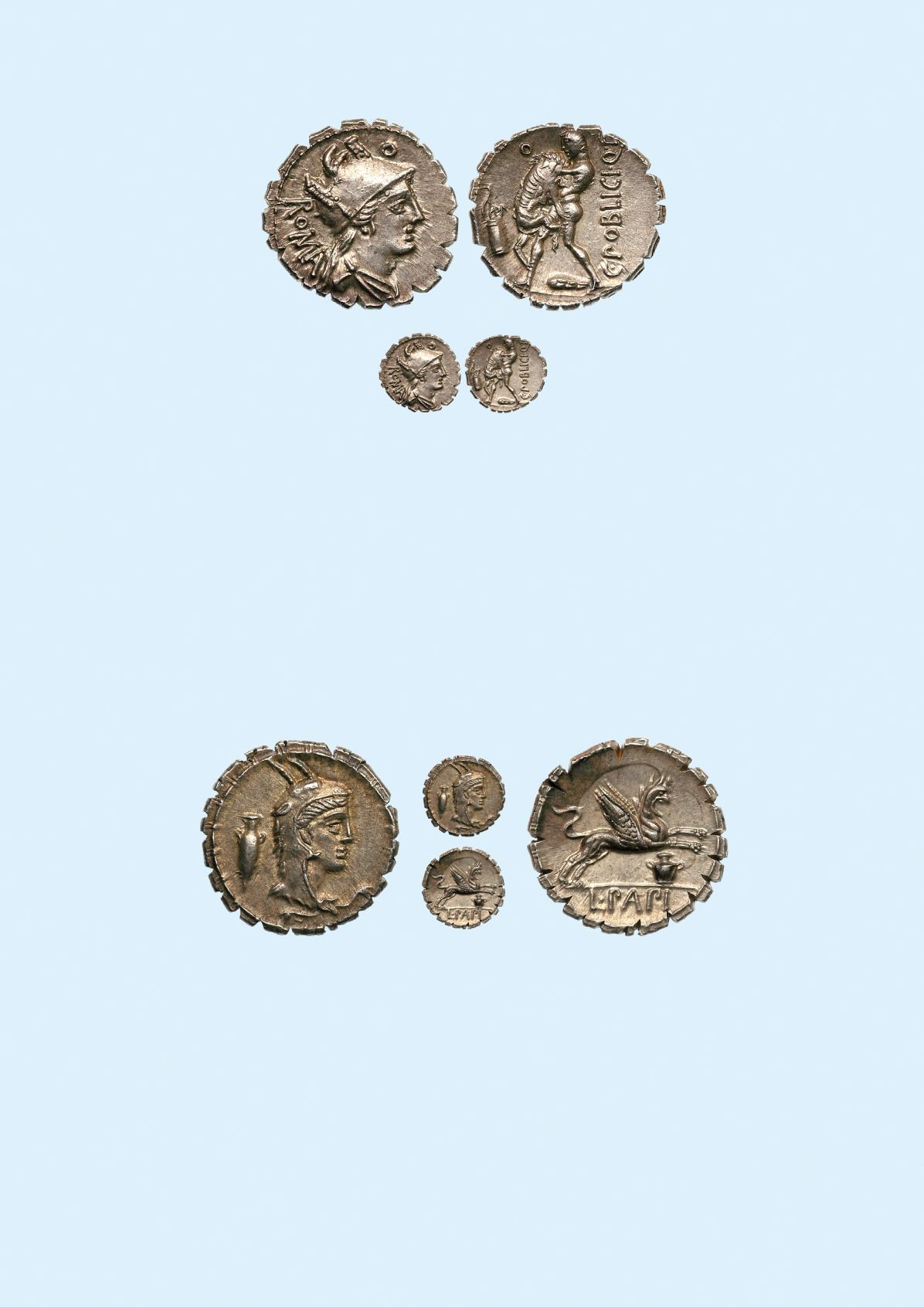
492
C. Poblicius Q F (80 BC), Silver Denarius, 3.65g. Mint of Rome.
ROMA
behind, draped bust of Roma right,
wearing Phrygian helmet ornamented with plumes on sides, O above. Rev.
C POBLICI Q F
, Hercules standing
left, strangling the Nemean lion, club between his feet, bow and quiver in left field,
O
above (Crawford 380/1;
Sydenham 768; Poblicia 9). Boldly struck, well centred and lustrous, delicately toned, mint state.
$ 2,000
ex Künker Auction 174, 9 September 2010, lot 534
Although the moneyer is unattested except for his coins, his family is well known for having built the small Aventine
road, the Clivus Poblicius, as well as the temple of Flora, whose games they instituted in 241 BC. The types chosen by
the moneyer for his coins should probably be viewed in light of Sulla’s victories, but possibly there is a family connection
as well. The reverse type showing Hercules strangling the Nemean lion may allude to the moneyer’s family origins at
Cora, where there was a famous temple to Hercules, and from Cora even further back to Argos and the valley of Nemea
where Hercules killed the lion. The Phrygian helmet worn by Roma seems to be a simple artistic feature, with no further
significance other than perhaps reflecting an awareness of Trojan origins.
493
L. Papius (79 BC), Silver Denarius, 4.00g. Mint of Rome. Head of Juno Sospita right, wearing goat skin
headdress, amphora behind. Rev.
L PAPI
in exergue, griffin springing right, hydria below (Crawford 384/1
(symbols 2); Sydenham 773; Papia 1). Boldly struck and perfectly centred, amazing detail throughout and
delicately toned, superb extremely fine.
Rare symbol.
$ 2,500
ex Triton Auction XV, 3-4 January 2012, lot 1472
Although the moneyer is unknown except for his coins, the coins are very popular with collectors for the interesting controls they
display, which according to Crawford “are no more than a random selection of pairs of everyday objects” (p.399). Papius used two
related symbols, one on the obverse die, the other on the reverse, to keep track of production and to control losses amongst the
slaves at the mint. Each pair of controls only has one set of dies. On this particular coin the paired symbols are an amphora and a
hydria, both related to wine, the amphora for storage and the hydria for mixing wine with water (unlike barbarians with the uncouth
habit of consuming it undiluted, the Romans and Greeks always drank their wine mixed with water, often with the addition of spices
or honey for flavoring).


